 Miscellaneous
Miscellaneous  Miscellaneous
Miscellaneous  Our World
Our World 10 Green Practices That Actually Make a Difference
 Humans
Humans Ten Historic Men Who Deserve Way More Credit Than They Got
 Movies and TV
Movies and TV The 10 Most Heartwarming Moments in Pixar Films
 Travel
Travel Top 10 Religious Architectural Marvels
 Creepy
Creepy 10 Haunted Places in Alabama
 History
History Top 10 Tragic Facts about England’s 9 Days Queen
 Food
Food 10 Weird Foods Inspired by Your Favorite Movies
 Religion
Religion 10 Mind-Blowing Claims and Messages Hidden in the Bible Code
 Facts
Facts 10 Things You Never Knew about the History of Gambling
 Miscellaneous
Miscellaneous Ten Groundbreaking Tattoos with Fascinating Backstories
 Our World
Our World 10 Green Practices That Actually Make a Difference
 Humans
Humans Ten Historic Men Who Deserve Way More Credit Than They Got
Who's Behind Listverse?

Jamie Frater
Head Editor
Jamie founded Listverse due to an insatiable desire to share fascinating, obscure, and bizarre facts. He has been a guest speaker on numerous national radio and television stations and is a five time published author.
More About Us Movies and TV
Movies and TV The 10 Most Heartwarming Moments in Pixar Films
 Travel
Travel Top 10 Religious Architectural Marvels
 Creepy
Creepy 10 Haunted Places in Alabama
 History
History Top 10 Tragic Facts about England’s 9 Days Queen
 Food
Food 10 Weird Foods Inspired by Your Favorite Movies
 Religion
Religion 10 Mind-Blowing Claims and Messages Hidden in the Bible Code
 Facts
Facts 10 Things You Never Knew about the History of Gambling
10 Things We Know About Elon Musk’s Future Colony On Mars
Twenty years ago, if someone had said they were going to colonize Mars, society would have laughed in their face and said it’s impossible. Even today, many doubt the idea of moving mankind to a new planet or moon. Elon Musk wants to prove not only that it can and will be done but that this planetary migration could save the human race.
If there is a World War III, Earth and human life could become extinct. Mars is a proposed backup plan for when our home planet is no longer habitable. The self-made billionaire, entrepreneur, and CEO of SpaceX has already begun his mission, and he’s sharing updates with the world every step of the way. Here are ten things we know about Elon Musk’s future colony on Mars.
10 Mission To Mars Announced In 2016

In September 2016, Elon Musk first painted the picture of a human colony on Mars. His goal was to make us an “interplanetary species” and colonize the Red Planet. The biggest problem standing in his way at the time was finding the financing to make his dream a reality. One year later, he returned with a polished copy of his painting. During a presentation at the International Astronautical Congress in Adelaide, Australia, Musk presented his revised plan along with his newest space transportation, the BFR.[1]
The original details of the idea weren’t changed dramatically (a few dates shifted forward a couple of years, and the rocket got smaller) but one of the things Musk did address was how he would afford the cost of colonizing another planet. Like any good entrepreneur would do, he came up with a business plan that turns his space vehicle into an investment that will be utilized by SpaceX for future partnerships.
9 The BFR Transportation
The BFR is an updated rocket design set to eventually replace Falcon 9, Falcon Heavy, and Dragon.[2] Replacing these will be crucial for the affordability of the missions. This switch will solve multiple problems while continuing to service orbital needs from the Earth, the Moon, and Mars. It will, of course, be protected with a heat shield as it enters Mars’s hot atmosphere at 7.5 kilometers per second. While they do expect wear and tear over time, the BFR be able to complete multiple flights.
The BFR is reusable, resulting in lower costs than other rockets and space vehicles. It’s also large enough to carry 100 passengers. This rocket will also be used to launch satellites and space telescopes, clean up space debris, and deliver cargo to the International Space Station (ISS). We can even expect to see future flights around the globe using the BFR instead of a commercial airline. The goal of replacing the need for other rockets and planes is to increase revenue.
8 The First Mission To Mars Will Be In 2022
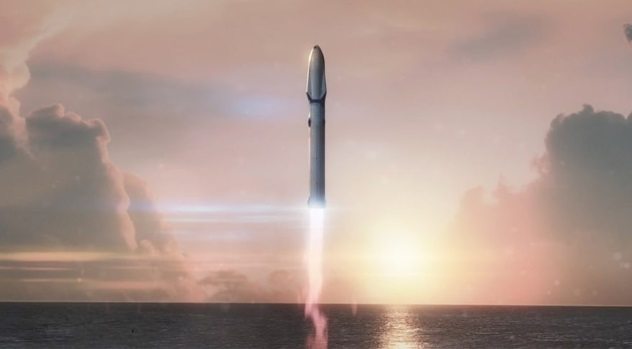
SpaceX has announced their goal to complete an unpiloted cargo mission to Mars in 2022. Their first set of priorities will be to confirm water resources and identify potential threats to their colonization. During this time, SpaceX will also put into place initial power, mining, and the infrastructure of life support. This is will be a vital operation, and if everything goes well with the first mission, we will all bear witness to a historic moment for mankind.
To stay on track, they’ll need to build their ship in 2018 so that it may run practice orbits in 2019.[3] These short trips are crucial to guaranteeing the rockets’ ability to launch correctly. After these practice orbits have been completed and the BFRs have proven themselves worthy of carrying life, the next mission to Mars will be the one that changes everything for the human race. It will be the one that makes us the interplanetary species Musk is hoping for.
7 2024 Is The next Mission To Mars
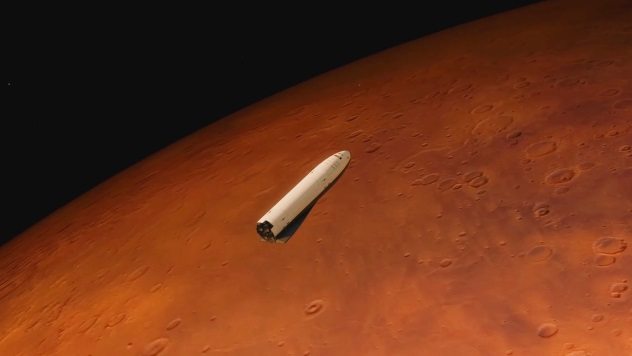
The success of the first mission will help us take the first giant leap for mankind to Mars.[4] In 2024, SpaceX will launch piloted BFRs to transport both cargo and the first settlers of the Red Planet. The mission would take months, but the passengers will have plenty of room on the rocket. A single BFR has enough space to accommodate 100 people with its 40 cabins, large common areas, and entertainment systems.
How many people will be on the first flights hasn’t been confirmed yet, but it’s likely that this trip will only be for astronauts. Upon arriving, these first settlers will build a propellant depot to act as a gas station for space vehicles and prep for crews to come in on future flights. This fuel plant and the ships used for the initial missions will serve as the beginning of the first Mars base. From there, they aspire to build a self-sustaining civilization on a planet currently uninhabitable for humans.
6 Elon Musk Has An Idea Of How To Make Mars Fit For Human Habitation
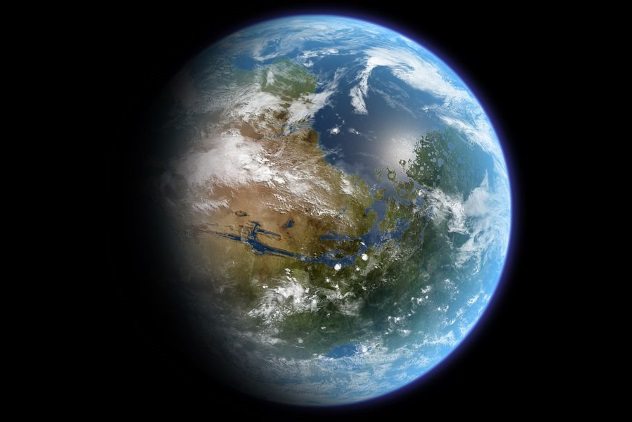
The Red Planet is lethal for the human race, for the moment. We can’t breathe the air, the soil is toxic, and the water is trapped in ice deposits below the planet’s surface. Musk has addressed the problem with a solution to transform Mars into an Earth-like planet so that it may support human life. By terraforming Mars, it could become habitable for humans. The question is how do we go about transforming a planet to be like ours?
Musk suggested nuking the poles to release the water trapped below the surface. The idea was referred to as deeply flawed and catastrophic for any life-forms that may be residing there already.[5] While Musk hasn’t stated that this is, in fact, what he intends on doing, SpaceX has confirmed that once the landing pads have been built, they will begin constructing an urban environment similar to Earth. These same landing pads will also give BFRs the opportunity to travel to a future lunar base and beyond.
5 There Will Be An Outpost On The Moon
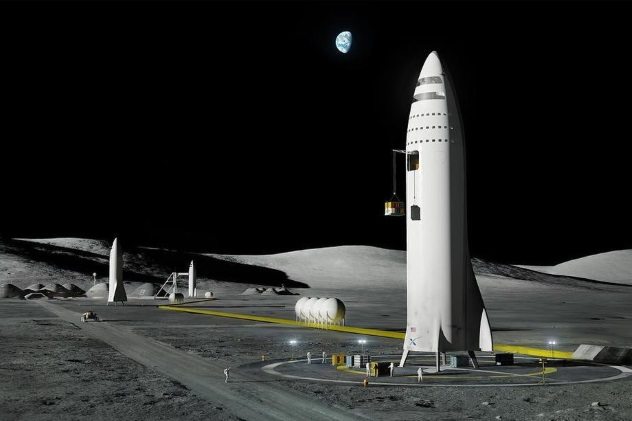
On December 11, 2017, President Trump signed a new directive for the NASA administrator to refocus on the Moon.[6] This directive will send American astronauts to the orbiting satellite for the first time since 1972. This mission will enable them to establish the foundation needed for further exploration of Mars and beyond.
Upon learning the news, Musk responded by stating that, “We should have a lunar base by now.” This isn’t the first time that the SpaceX CEO has shared his thoughts on building our presence on the Moon. At the International Astronautical Congress in Adelaide, Australia, in September 2017, Musk addressed the lunar base issue and discussed how the BFR could easily land on the Moon to deliver cargo or people.
4 Colonizing Mars Isn’t Going To Be Cheap

Becoming an interplanetary species is going to cost SpaceX and future travelers. Musk had estimated the cost of developing the BFR would be around $10 billion. SpaceX has financed development costs in the lower millions per year, meaning they will eventually need to seek a public-private partnership. This partnership could help cover the cost of colonizing and terraforming another planet for the one million residents expected by 2060.
To establish a self-sustaining civilization on Mars, they will need to send around 10,000 flights in the BFRs, not including the ones carrying equipment and other supplies. The first tickets will be “fairly expensive,” but over time, single ticket prices could drop to $100,000 to $200,000.[7] If you’re one of the ones eager to join the Mars colony, you’ll want to start saving now.
3 It’s Already Begun

We’re in the very early stages of colonizing Mars, but we have already heard and witnessed some incredible things. One of those was watching as Elon Musk sent his own car into space. In February 2018, SpaceX launched the Falcon Heavy rocket with the Tesla and camera attached.[8] While they were aiming for Mars’s orbit, it was overshot and is currently stuck orbiting the Sun until we can retrieve it.
This could be a lesson learned for SpaceX as they review the information for future test flights with the BFR. Musk revealed at SXSW festival in March 2018 that they’ve already begun building the first interplanetary rocket. The goal is to have this BFR prototype ready for short up-and-down flights in the first months of 2019.
2 What Else We Have To Look Forward To
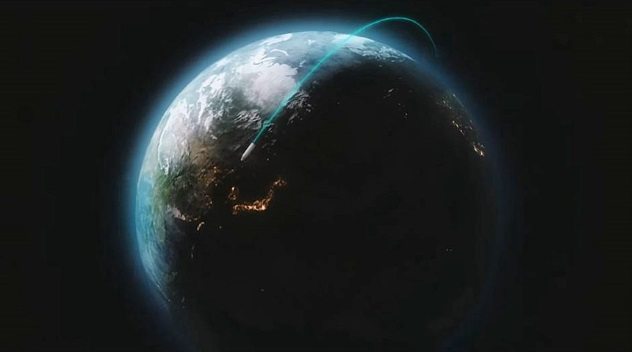
The outpost on the Moon and the colonization of Mars isn’t all we have to look forward to. The same rocket that will be transporting passengers to other planets and moons will also have the ability to take travelers around the world in less than an hour. The BFR will carry those aboard into space, where there is hardly any friction, no bad weather, and zero turbulence. This will enable it to cut travel time and, for example, make a trip between Los Angeles and Tokyo in 32 minutes.[9]
Imagine being able to travel anywhere in the world in less than an hour. Once NASA builds the lunar base, we’ll be able to take our trips further than we ever could imagine. Continuing with Musk’s dream of becoming an interplanetary species, the BFR will carry passengers to the Moon, Mars, and, maybe one day, even further. While we wait for our long-distance travel dreams to come true, we can watch as Elon Musk and SpaceX create and test the interplanetary vehicle needed to get us there.
1 The Potential Health Risks Of Human Life On Mars
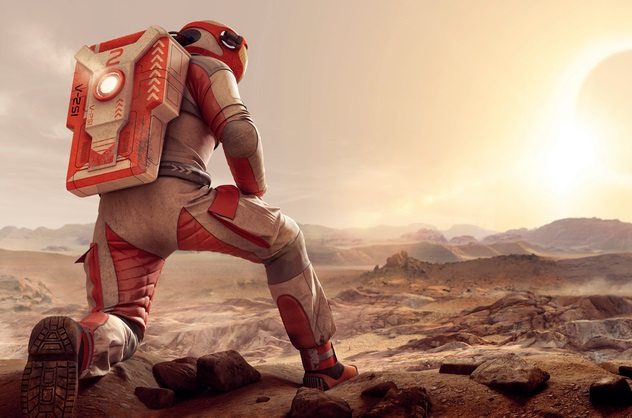
As we all know, Mars today is toxic for human life. Those who decide to go would be doing so at the risk of space radiation, weaker muscles, and a weaker immune system. As you travel through space on your journey to Mars, you’re going to be exposed to radiation that could lead to cancer and eye damage. Travelers to Mars will be in a microgravity environment on the way there, and the Red Planet only has one third of what our muscles are used to fighting against on Earth. As a result, your muscles will weaken and waste away.
That won’t be the only thing that changes in the human body. Traveling in space changes factors in the immune system that can lead to an illness because our cells don’t put up as strong of a fight.[10] Without medical help nearby and the inability to perform CPR in space due to zero gravity, something as simple as the flu has the potential to turn deadly.
Human life on Mars poses risks for the Red Planet, as well. There is a possibility that by forming a colony or visiting, we are contaminating the planet and eliminating any life-forms currently residing there. These are things that will need to be addressed before we can begin the transformation into an interplanetary species.
C.C. Baguley is a freelance writer and sci-fi author. Catch up with the author on Twitter @ccbaguley and by visiting ccbaguley.wixsite.com/welcome
Read more about Mars colonization on 10 Ways Your Mars Trip Will Be More Uncomfortable Than You Think and 10 Key Tech Advances We Need To Colonize Mars.








